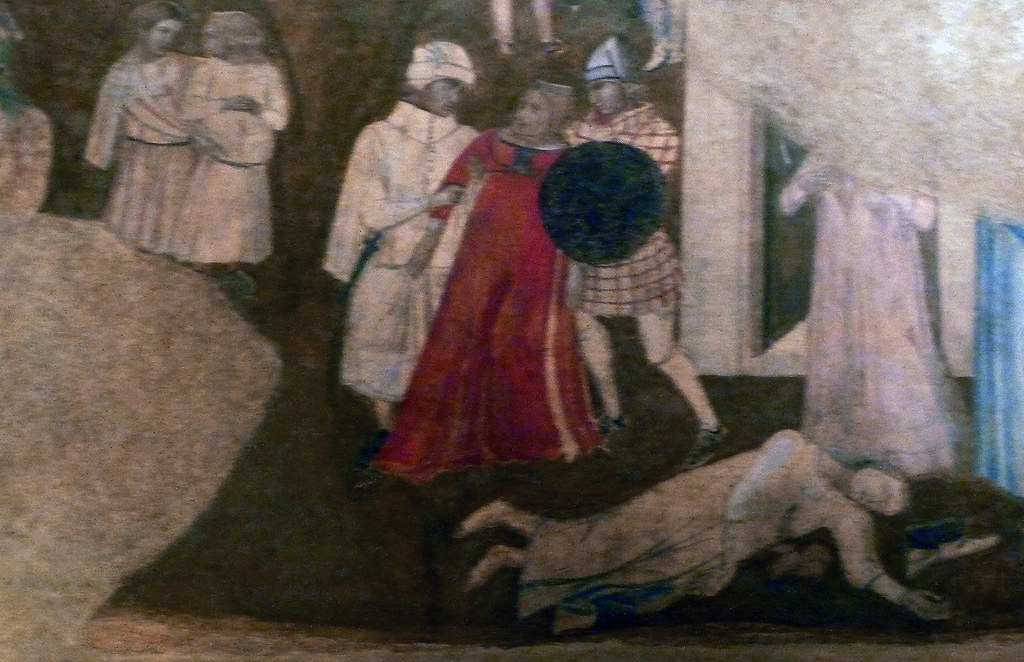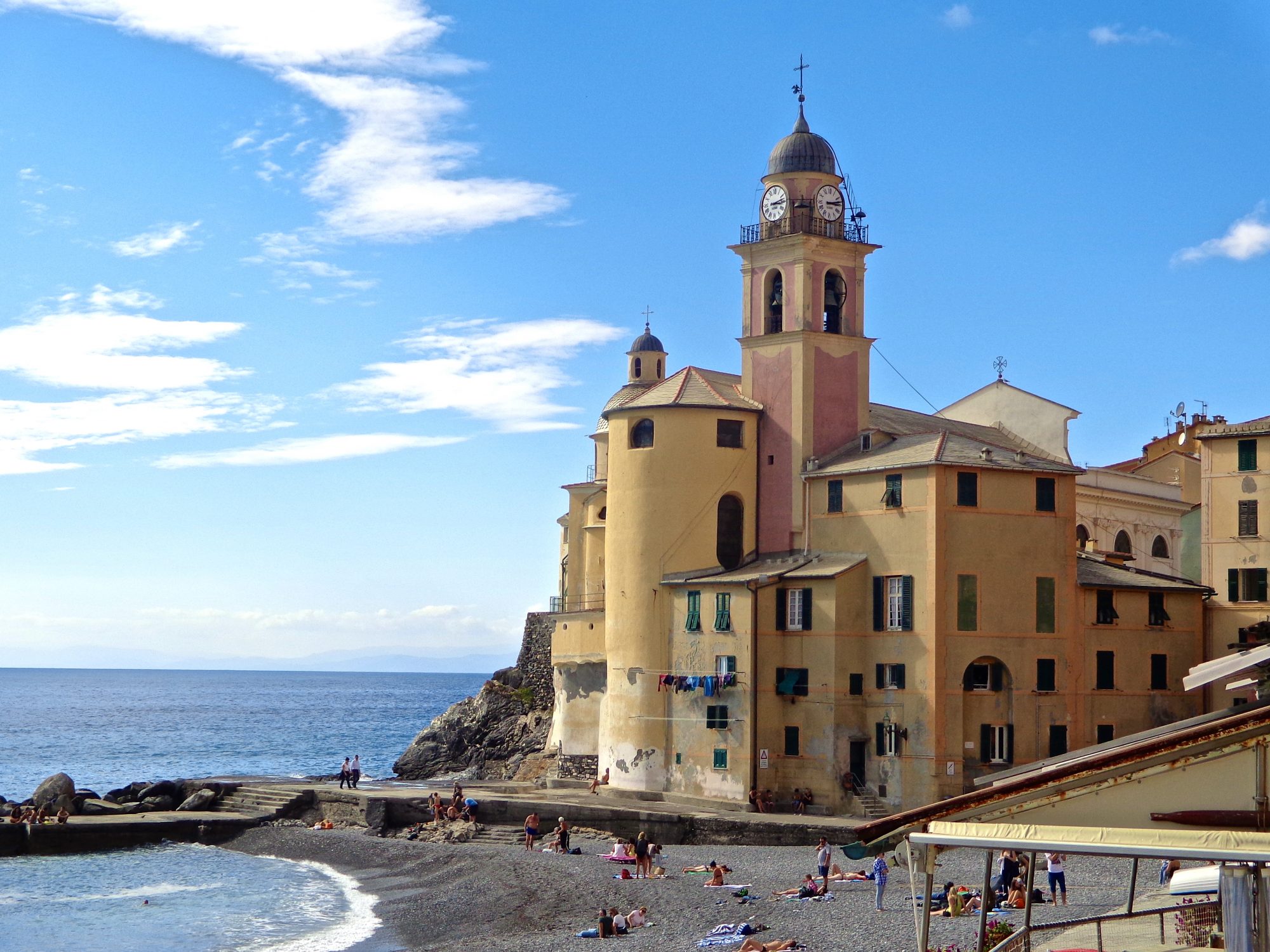
I love to spend time observing artwork in Italy, from ancient frescos and sculptures up through the Renaissance masters. One of my very favorites is in the Tuscan town of Siena. On the main piazza named the Campo, stands the medieval Palazzo Pubblico, the old town hall. Inside is the Sala della Pace (Hall of Peace) also known as the Sala dei Nove (Salon of Nine or Council Room). Painted on the walls are several different fresco scenes by famous artist Ambrogio Lorenzetti: Allegory of Good Government, Allegory of Bad Government, Effects of Bad Government in the City, Effects of Good Government in the City and Effects of Good Government in the Country. I’ve found these frescoes accurate and timeless in their deptiction of daily life under wise and virtuous rulership as opposed to a self-centered, corrupt, and tyrannical government.
In the 14th century, Italy was divided into city-states and operated as individual countries with their own government. Siena was a proud republic and one of the most powerful cities that had grown wealthy from banking and merchandising. The city, due to its location, also accumulated wealth from pilgrims as they traveled the road between France and Rome. However, politics were tumultuous in Italy during this time when governments were often overthrown and others reinstated.
Siena was ruled by two strong powers; the church, exemplified by the expansive duomo on top of the hill, and the Palazzo Publico, the city hall. The council room within was the meeting place for The Nine, a rotating selection of citizens who were the city council for a two month span of time.
Unlike most artwork of the time which was religious, these were civic and commissioned by the local governing bodies. They served as a constant reminder to the city rulers of their responsibility to make decisions that are good and just, and the dangers of neglecting to do so.

In the first fresco, named The Allegory of Good Government, is a door in which the Nine entered located below the figure of Justice. In the fresco, Justice looks upward toward the figure of Wisdom. Justice holds a large scale balanced on each side by an angel, who administers a reward on one side and a punishment on the other. Cords wind from the two angels toward a figure named Concordia. In her lap is a tool known as a plane, used to symbolize a sense of equality among the ranks of citizens who represent the varying levels of society. All are held together by these cords flowing from Justice.

These cords continue upward toward a large figure named Good Comune who is surrounded by various vitues. On the left is Peace, who is reclining at rest. Under her pillow is her old oxidized armor that she no longer needs. The interpretation seems to be that if all the surrounding virtues are working among the rulers and people of Siena, there is peace.

To the right is a frescoe entitled The Effects of Good Government in the City and the Country. It is a secular scene depicting commerce flourishing. There is no privation but only plenty. Justice, art and culture reign predominant in the scene.

This is a utopia depicting heaven on earth within an urban environment. Through careful governing, people can flourish. The city is alive with well-to-do citizens conducting acts of commerce. Beautiful architecture is being expanded by workers and shops are alive with business. There is dancing in the streets and a sense of peace and order is strong.

The governing Nine had this scene before them while making decisions for the city. It served as a constant reminder to them that if they made right decisions this is what their city will be.
The Effects of Good Government in the Countryside depicts wealthy aristocrats hunting on horseback. A peasant is guiding his pig to market in the city. There is sowing and harvesting in the vast landscape. All is healthy and productive.

On the left wall is The Effects of Bad Government which is a stark contrast to previous frescoes. A devil figure is depicted as the opposite of Justice with the words Tyranny written above him. He is surrounded by vices such as Avarice and Vainglory. Below him is Justice who is bound and no longer reigning over the city. A series of criminal acts take place against an architecture damaged by war. The city is being destroyed, depicted by broken windows and holes in walls. Fear seems to have a grip on the citizens of the city.

A woman is being escorted away by two men and another is lying wounded on the ground with no one attending to her. The countryside is a mass of burned fields and houses on fire. It is clearly a place of deprivation and neglect. A figure named Terror rides roughshod over the landscape.
So much symbolism in the details could be found as I stood before these frescoes painted centuries ago, when Italy was war-torn with neighboring rivalry and peace was far from a guarantee. What was true then remains true today. Good Government reaps the beneits of a healthy and contented population that is engaged and productive. I’m certain that the ruling Nine carried a huge responsibility to ensure that the people of Siena would never have to experience a life other than this.
Resources:
Ambrogio Lorenzetti, Palazzo Publico frescos; Allegory and effect of good and bad government

Love your post! We were in Sienna last summer and our tour guide did not show us these amazing frescoes. Thanks for sharing!
LikeLiked by 1 person
My pleasure! I am very surprised that your guide did not show these to you. They are a big part of the history of Siena. I’m glad you enjoyed the article and I hope you get the chance to see them in person one day soon:)
LikeLiked by 1 person
Susan Great and fitting article for our country’s troubled times!! We are out of touch again. Where are you now? I am in CO now helping my parents. Back soon. Let’s connect! Miss you. xoxo Melanie
Sent from my iPhone
>
LikeLiked by 1 person
I’m living in my house in McMinnville. Let’s definately connect soon!
LikeLike